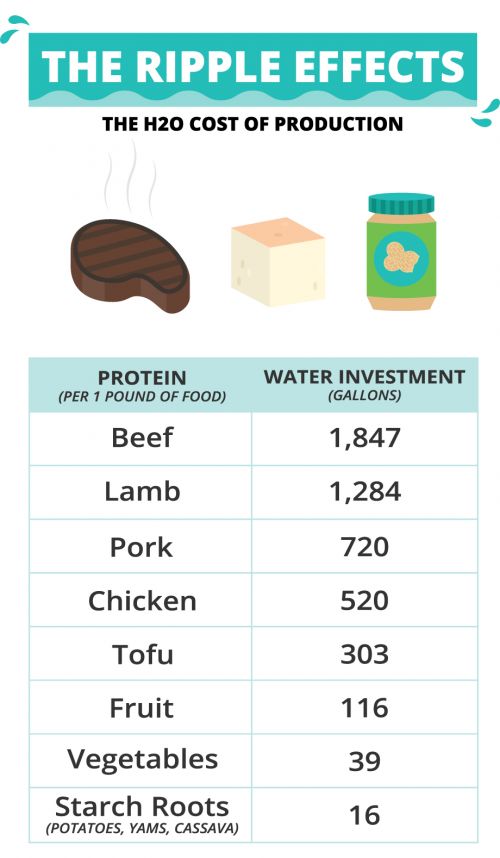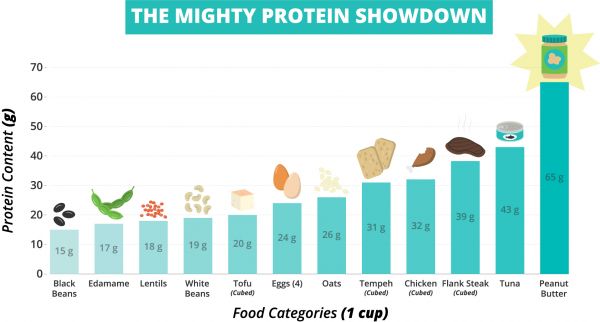Throughout the entire world, people in the United States consume the most meat. In fact, last year U.S. consumers had access to 224.6 pounds of red meat and poultry on a per capita retail weight basis. However, the damage meat consumption causes to our environment is unknown for a majority of the U.S. population.
What people aren’t aware of, is the pressing environmental issues that result from meat production. These factors include an increase in rates of methane and CO2, overconsumption of water, overuse of land resources, waste production, water and air quality degradation, deforestation, and species extinction.
With the production of meat and agricultural necessities to keep livestock alive, the amount of carbon dioxide released into the atmosphere, mass amounts of waste, and the deforestation of the planet to keep up to the demand of products needed, there are steps that can be taken to help the earth and our own health.

Choosing Meat Alternatives
Some may argue that eating meat alternatives to help our environment may be challenging, or that adding in more protein that isn’t meat won’t provide the same benefits. However, having a higher protein intake in your diet doesn’t always translate to eating more meat. There are several other alternatives that can provide you with the same amount of protein.
The three different types of meat alternatives are traditional substitutes, plant-based meat alternatives, and lab-grown meat alternatives. The most popular meat alternatives are traditional substitutes which include foods like tofu, tempeh, seitan, lentils, beans, and chickpeas.
Plant based meat emits 30%-90% less greenhouse gas than conventional meat. Even though these products have only been around for about ten years, this substitute has the potential to lead us to a sustainable food supply. Lab-grown meat alternatives, better known as cultured meat, is grown with stem cells and muscle samples from animals.
Other common foods like tuna, eggs, hummus, peanut butter are high in protein and can provide the same benefits as meat. Below shows how many grams of protein are in each serving of food for meal alternative options.

What to know about meat substitutes
There are plenty of meat substitutes at your local grocery store that have a taste, texture, or appearance similar to meat but do not contain meat. Meat substitutes can ease the transition but it is important to know that just because the product is vegetarian, it does not mean that it is healthy for you.
Many of the meat substitutes contain added preservatives, sugars, inflammatory oils, or other ingredients that are not the best. That’s why it is important to flip over the box and see what’s there before you buy. It is suggested to check to see what the saturated fat and sodium content is. The Dietary Guidelines suggest that adults consume no more than 2,300 mg/day.
If it seems overwhelming to look at the ingredient lists of all of the meat alternatives, you can never go wrong with the classics: tofu, tempeh, beans and lentils.
It does not have to be a full commitment: try flexitarian
Being vegetarian does not have to be a full time commitment. Even limiting yourself to only eating meat on the weekends can lower your meat intake by 70% and can still make a significant impact on the environment.
Flexitarianism, or eating meat-free diet for the majority of your time, allows you to still enjoy that juicy steak once a month.
An option to begin with is meatless monday! Each monday you can try a new vegetarian meal that you have not made before. Eventually you can work up to more meatless days but you may like these new vegetarian meals so much that you prefer them over meat!
High-protein, quick, vegan snack ideas:
- Yogurt parfait: combine coconut yogurt, granola, honey, and fruit together into a bowl.
- Ants on a log: put peanut butter on celery sticks and top with raisins or dates
- Chia pudding: let chia seeds steep in almond milk overnight. Stir in fruit and honey the next day!
- Chickpea bites: drain and rinse a can of chickpeas and place on a baking sheet with parchment paper. Sprinkle with olive oil and salt and place in the oven for 20 to 30 minutes at 425 °F.
- Hummus platter: hummus tastes good with almost everything and is packed with protein. Try hummus with raw veggies or pita chips!
- Protein smoothie: combine frozen strawberries, bananas, peanut butter, and coconut yogurt to a blender along with non-dairy milk for a yummy and protein packed smoothie!
Switching to vegetarianism not only helps the environment by lowering greenhouse gas emissions, but it also helps your health. Read more of our blogs on sustainability here.
